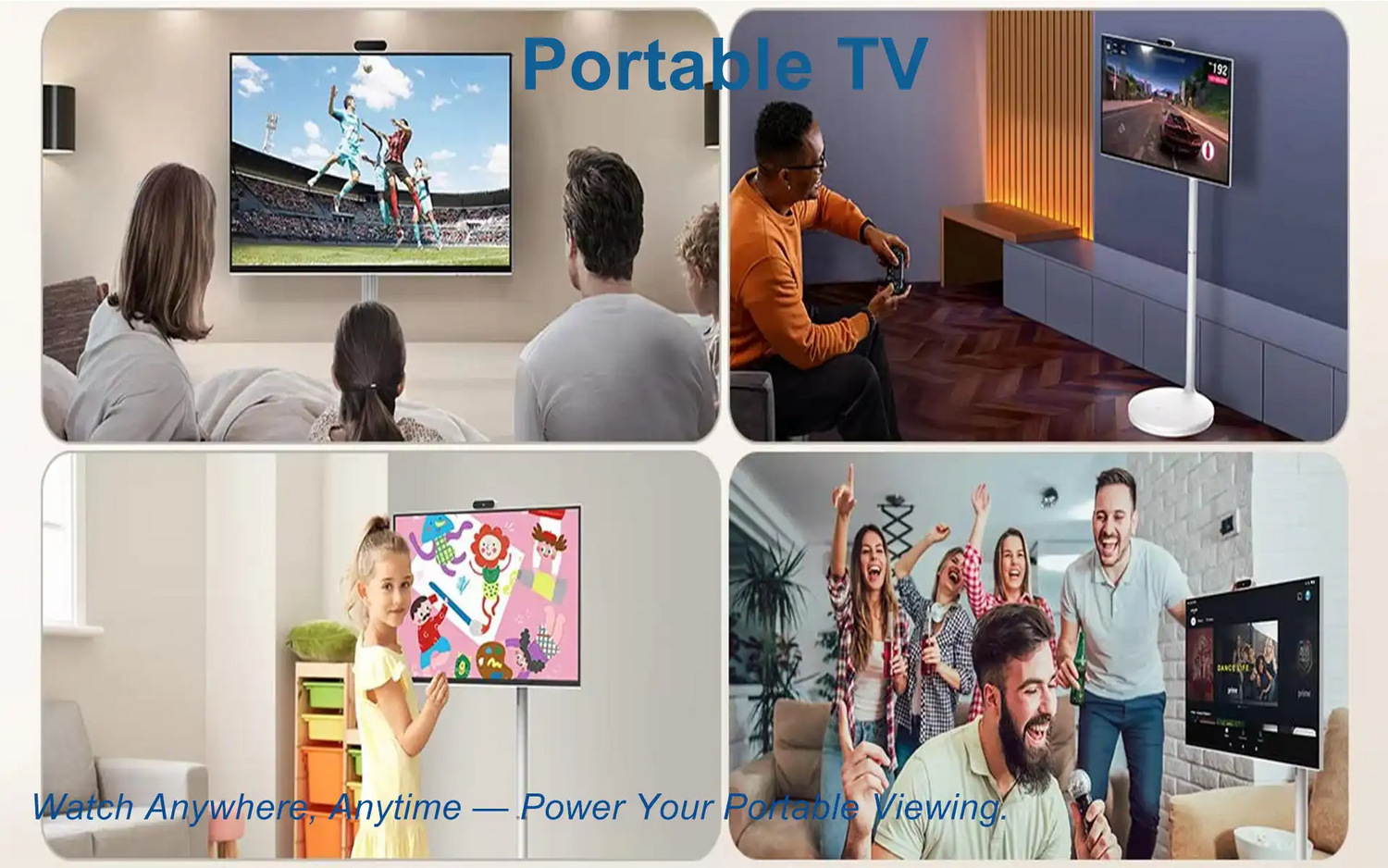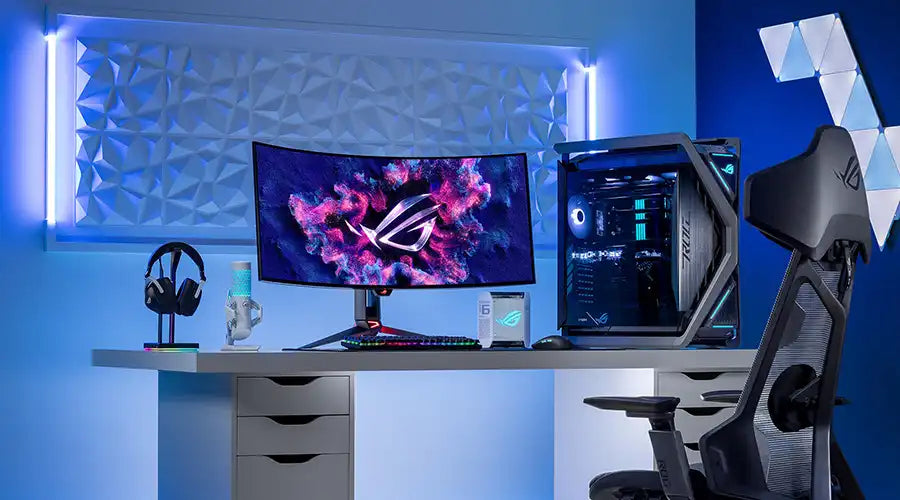Everything you need to evaluate, choose, deploy, and maintain a Portable TV in 2025—from display technology and battery life to connectivity, outdoor visibility, and real-world use cases.
What is a Portable TV in 2025?
A Portable TV in 2025 is a self-contained, lightweight display with integrated power, speakers, tuners, and smart connectivity designed for mobile viewing—indoors or outdoors. Unlike traditional televisions, a modern Portable TV prioritizes battery life, wireless streaming, compact form factors, and rugged design. It bridges the gap between a large-screen tablet and a living-room TV while offering HDMI/USB-C inputs for consoles, set-top boxes, or cameras, plus wireless protocols for OTT platforms and casting.
Today’s units commonly range from 10–24 inches, with HD to 4K resolutions, anti-glare coatings for sunlight readability, and quick mounts for camping, tailgating, kitchens, workshops, or pop-up retail. Industrial variants layer in Ingress Protection (IP), extended temperature ranges, and hard-mount options for vehicles or field deployments.

Evolution & Why Portable TVs Are Surging
The category matured rapidly due to three forces: (1) display tech breakthroughs (high-brightness IPS, OLED, and Mini-LED backlights), (2) efficient battery systems (high-density Li-ion with PD fast-charge), and (3) software ecosystems (Android TV, Roku, and seamless casting). As households stream more content and consumers spend more time outdoors, the demand for a carry-anywhere screen with robust audio, resilient build, and simple connectivity has grown sharply.
In parallel, enterprise and education scenarios (field training, events, demo booths, temporary signage) have adopted Portable TVs because they’re deployable within minutes, don’t require permanent power lines, and integrate with hotspots or 5G routers for content delivery.

Key Features & Core Specifications
While models vary, the table below summarizes typical Portable TV specs you’ll encounter in 2025. Use it as a quick comparison baseline when shortlisting devices.
| Category | Typical Range / Options | What to Look For |
|---|---|---|
| Screen Size & Resolution | 10–24″; HD, FHD, some 4K | FHD minimum for 13–16″; 4K if ≥18″ and you need crisp UI text |
| Panel Type | IPS LCD, OLED, Mini-LED (FALD) | High brightness & wide viewing for outdoor; OLED for contrast |
| Brightness & Coatings | 300–1,000+ nits; anti-glare/AR | ≥500 nits for daylight; AR coating for sunlit patios/campsites |
| Battery & Runtime | 5,000–20,000 mAh; 3–10 hrs typical | USB-C PD fast charge; replaceable or parallel battery options |
| Audio | Stereo 2–10 W; 3.5mm; BT audio | Front-firing speakers; low distortion; codec support (aptX/LL) |
| Connectivity | HDMI, USB-C (DP-Alt), Wi-Fi, BT, 5G via hotspot | At least HDMI-in + USB-C; dual-band Wi-Fi; Miracast/AirPlay |
| Smart OS | Android TV / Google TV / Roku / WebOS | App availability, updates, sideload policy, casting protocols |
| Ruggedness | Drop-resistant, IP rated, MIL-STD options | Corner bumpers, dust/water resistance, sunlight readability |

Display Technology: LCD, IPS, OLED, Mini-LED
IPS LCD — Balanced for Price, Viewing Angles
IPS panels dominate mid-range Portable TV models thanks to wide viewing angles, decent color accuracy, and mature supply chains. Look for high-brightness variants (≥500 nits) with anti-glare treatments, especially if you’ll watch outdoors. Local dimming is uncommon in portable form factors, so check contrast carefully.

OLED — Contrast King, Great for Night Viewing
OLED yields perfect blacks and instant response. In portable use it excels for movies and gaming after dark. Trade-offs include potentially higher power usage on bright UIs and long-term image retention if static elements are displayed for hours. If you pick OLED, enable logo brightness limiters and pixel shift when available.
Mini-LED — Brightness & HDR Punch
Mini-LED with full-array local dimming (FALD) appears on premium Portable TVs. It brings higher sustained brightness and better HDR than standard edge-lit LCDs. For outdoor daytime viewing or sports, Mini-LED provides strong visibility and bloom control, albeit with slightly higher weight and cost.
Audio, Tuners & Smart OS
Don’t overlook audio: compact enclosures can create thin sound. Seek front-firing speakers, tuned chambers, or bundled soundbars. Bluetooth support enables pairing with portable speakers; for latency-sensitive sports or gaming, check for aptX Low Latency or equivalent.
For broadcast content, some models include ATSC/DVB/ISDB tuners, while others rely entirely on streaming. On the software front, Android TV / Google TV has the broadest app availability; Roku and proprietary OSs emphasize simplicity. Confirm update cadence, casting standards (Chromecast, AirPlay, Miracast), and login security features.

Battery Life, Charging & Power Profiles
Real-world runtime depends on brightness, volume, wireless usage, and whether you’re decoding 4K HDR or simple SDR. Many Portable TVs offer 3–10 hours on a charge. Prioritize USB-C Power Delivery (PD) with pass-through operation so you can watch while charging via power bank or car adapter.
- Eco picture mode: Reduces backlight power substantially outdoors if you’re in shade.
- Auto brightness: Ambient light sensors help stretch battery life without manual tweaks.
- Replaceable packs: Niche models accept swappable batteries for multi-day trips.

Connectivity: HDMI, USB-C, Wi-Fi, 5G
The best 2025 Portable TV units combine HDMI-in, USB-C (DisplayPort Alt-Mode), dual-band Wi-Fi, and Bluetooth. If you rely on phone tethering or a mobile hotspot, verify 5 GHz band support for stable high-bitrate streams. For gaming handhelds or laptops, USB-C single-cable power + video is the most convenient.
Pro tip: if you plan to use drones, DSLRs, or field cameras, check for low-latency HDMI paths and compatibility with your camera’s output resolution/refresh combinations.

Ruggedness, Outdoor Readability & Mounting
Outdoor-oriented models emphasize shock-absorbing frames, corner bumpers, IP dust/water resistance, and bright anti-glare screens. Look for VESA-compatible backs or quick stands, car headrest adapters, tripod sockets, and strap points. If your use involves sun exposure, consider a hood or sunshade attachment.
Applications & Use Cases (Home, Outdoor, Pro)
Home & Personal
- Kitchen / Workshop: Stream recipes, tutorials, or sports while you cook or build.
- Kids & Learning: Educational videos with durable stands and parental controls.
- Guest Rooms: Temporary screens without wall drilling or cable runs.
Outdoor & Travel
- Camping & RV: High-brightness Portable TV with hotspot streaming.
- Tailgating & Sports: Watch pre-game analysis with amplified speakers.
- Beach & Patio: Anti-glare, splash-resistant units for sunny environments.
Professional & Education
- Pop-up Retail / Signage: Loop promotions with scheduled playlists.
- Field Training & Events: Quick-deploy screens with battery operation.
- Cameras & Production: On-set preview or client monitor with HDMI-in.
Portable TV vs Tablets, Projectors & Monitors
| Device | Pros | Cons | Best For |
|---|---|---|---|
| Portable TV | Bigger than tablets; real HDMI; better speakers; outdoor-ready | Heavier than tablets; shorter battery than small slates | Travel TV, tailgates, RV, pop-up signage |
| Tablet | Light, touch UI, huge app stores | Small screens; limited HDMI; fragile outdoors | Personal viewing, quick browsing |
| Mini Projector | Very large image size; cinematic feel | Needs dark room; fragile focus outdoors; audio weaker | Movie nights in controlled lighting |
| Portable Monitor | Thin & light; great as laptop second screen | No tuner; weaker speakers; usually no battery | Productivity and gaming rigs |
Buying Guide & Decision Checklist (2025)
1) Where will you use the Portable TV?
Mostly outdoors: seek ≥500 nits, anti-glare, rugged frame, and long battery. Indoors: prioritize color accuracy, audio, and smart OS. Travel: weight and compact stands matter.
2) What will you watch?
Sports & live: high brightness + stable Wi-Fi/5G. Movies at night: OLED or high-contrast Mini-LED. Gaming: HDMI 2.0+, low input lag, 60–120 Hz support if available.
3) How will you connect?
Ensure HDMI-in for consoles/cameras; USB-C DP-Alt for one-cable laptop use; native casting for phones; verify codecs and DRM for your streaming apps.
4) Battery expectations
If you need 6–8 hours, check capacity and real-world tests; confirm PD charging and power-bank compatibility.
5) Durability & warranty
For camping/field work, look for IP ratings, corner protection, and serviceable parts. Read the warranty for battery coverage and panel uniformity.

Setup, Signal Optimization & Picture Tuning
- Network: Use 5 GHz Wi-Fi for 4K; position hotspot above table level to reduce interference.
- HDMI Chain: Keep cables short; confirm EDID matches your source to avoid scaling artifacts.
- Picture Modes: Start with “Movie/Cinema” for accuracy, then raise brightness/contrast for daylight.
- Audio: If dialogue is thin, enable speech enhancement or pair a BT speaker with low-latency mode.
Care, Maintenance & Troubleshooting
Wipe screens with microfiber; avoid harsh solvents. Store batteries at ~40–60% if unused for weeks. For flicker or dropouts, test another cable, lower resolution (for weak links), or update firmware. Keep intake/exhaust vents clear in hot weather.
Sustainability & Compliance
Many 2025 Portable TVs adopt low-power SoCs, recyclable packaging, and RoHS/REACH compliance. Some brands implement eco modes that cap peak brightness and auto-sleep when idle, extending panel life and reducing energy use.
Custom/OEM Portable TV Solutions
For brands and integrators, custom Portable TV solutions can tailor display size (e.g., 8–32″), panel type (IPS, OLED, Mini-LED), brightness, battery configuration, and enclosure ruggedness. Interfaces like HDMI, USB-C, and LVDS/MIPI can be combined with Android TV or bespoke Linux stacks for signage and field operations. ODM services typically include mechanical design, tuning, certifications, and lifecycle support.

FAQ — Portable TV in 2025
Is a Portable TV better than a tablet for travel entertainment?
If you want a larger screen, stronger speakers, and real HDMI for consoles/cameras, a Portable TV wins. For extreme mobility and touch apps, a tablet is lighter but less immersive.
How many hours does a Portable TV usually last on battery?
Typical runtime is 3–10 hours depending on screen size, brightness, and streaming workload. Seek USB-C PD fast charging and consider power banks for long trips.
Can Portable TVs handle 4K and HDR?
Premium 2025 models can decode 4K and support HDR; however, outdoor brightness and tone-mapping determine the real benefit. Mini-LED backlights improve highlight control compared to standard LCDs.
Do I need a tuner or is streaming enough?
Many users stream exclusively; choose a smart OS with your apps. If you require broadcast content without internet, select a model with the proper ATSC/DVB/ISDB tuner for your region.
What connectivity is essential for a 2025 Portable TV?
HDMI-in for consoles & cameras, USB-C DP-Alt for laptops, dual-band Wi-Fi for streaming, Bluetooth for audio, and casting (Chromecast/AirPlay/Miracast) for phones.
How do I improve outdoor visibility?
Use a high-brightness panel (≥500 nits), turn on anti-glare/auto-brightness, position under shade, and consider a sunhood. Avoid reflecting surfaces behind you.





댓글 남기기
이 사이트는 hCaptcha에 의해 보호되며, hCaptcha의 개인 정보 보호 정책 과 서비스 약관 이 적용됩니다.